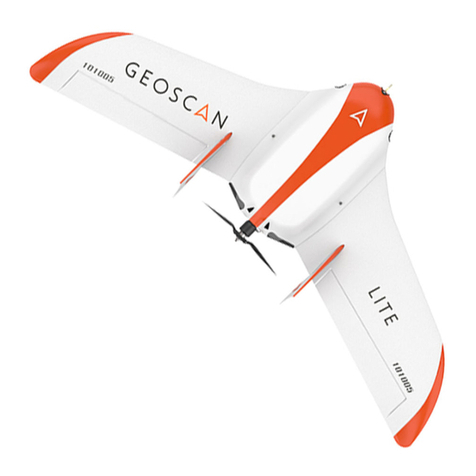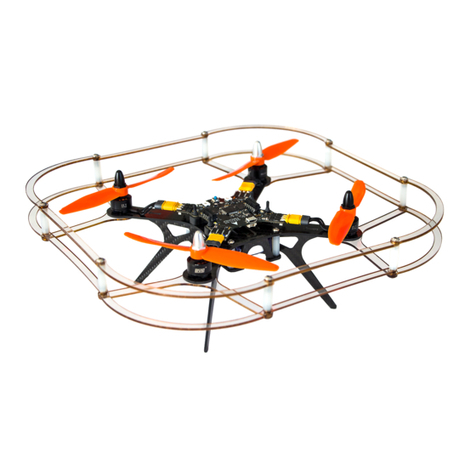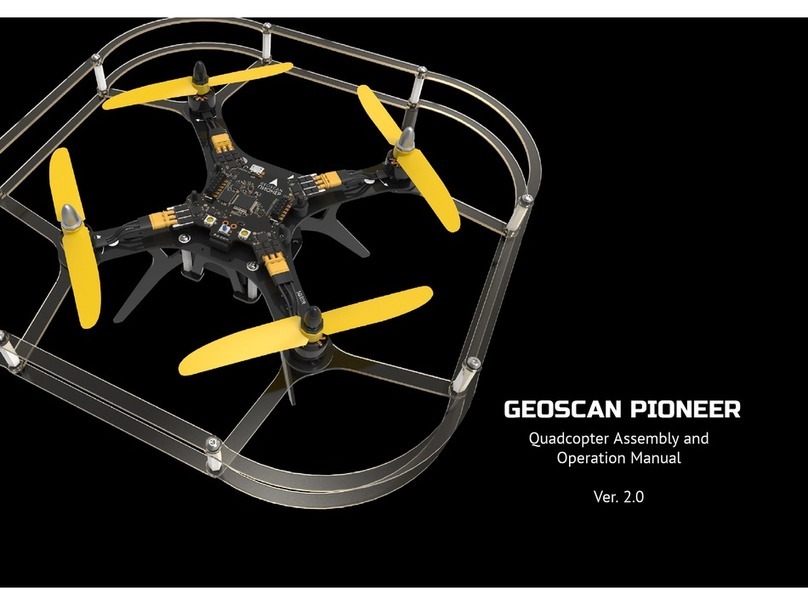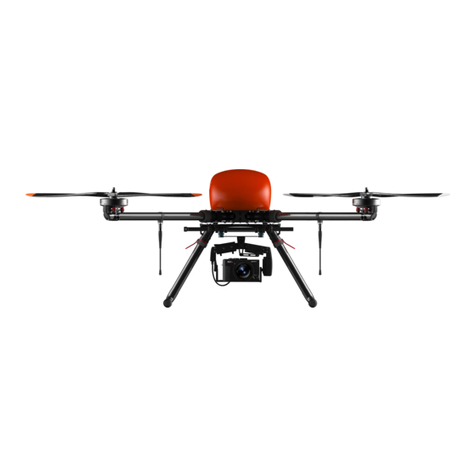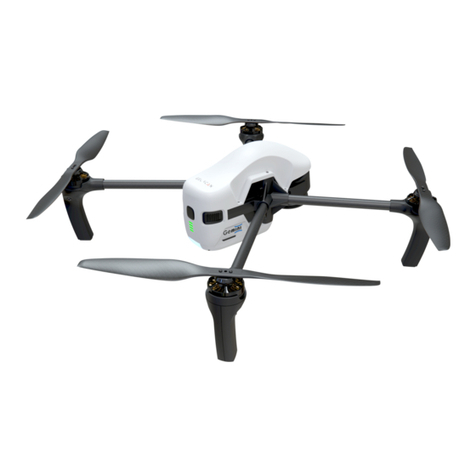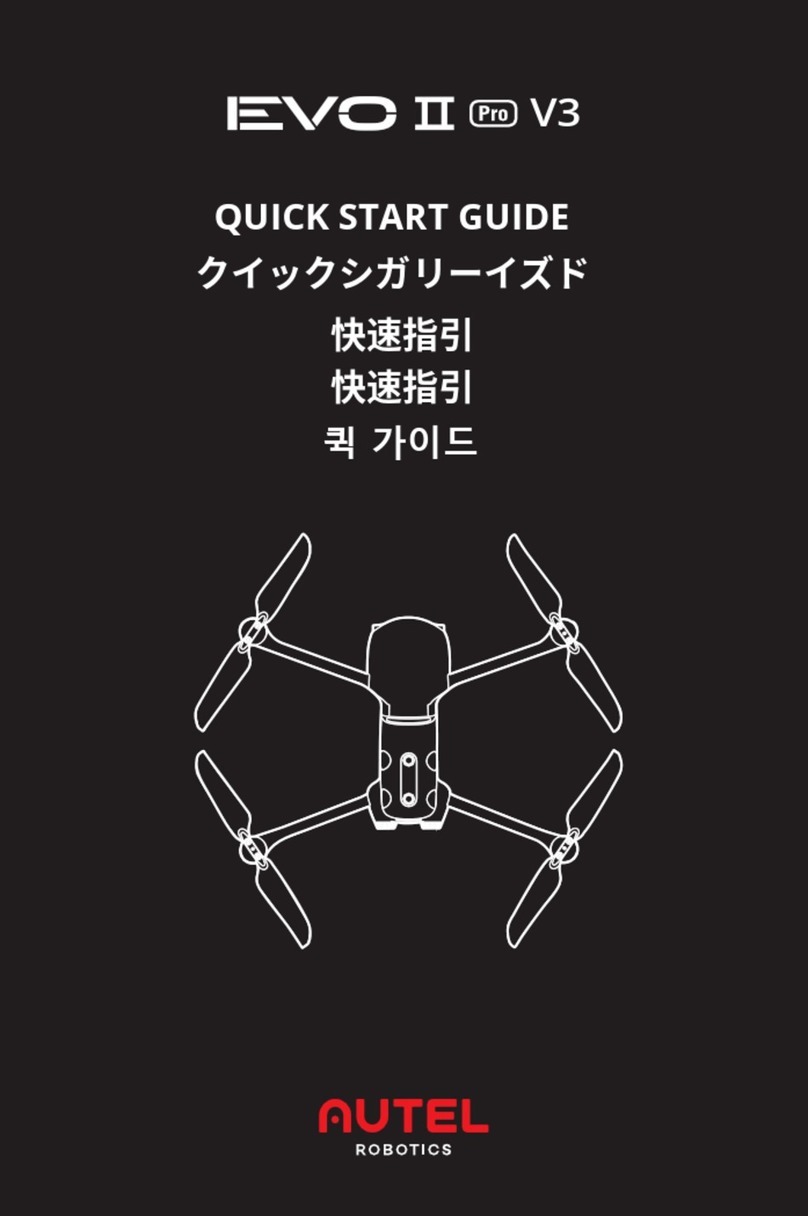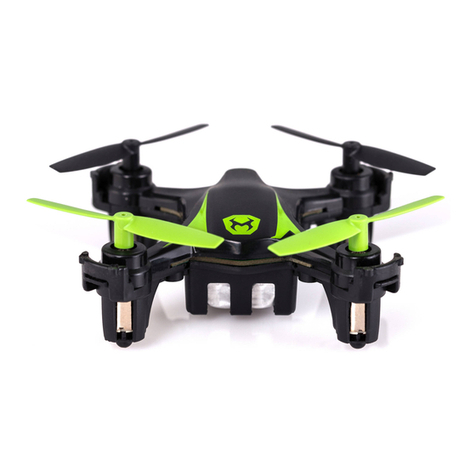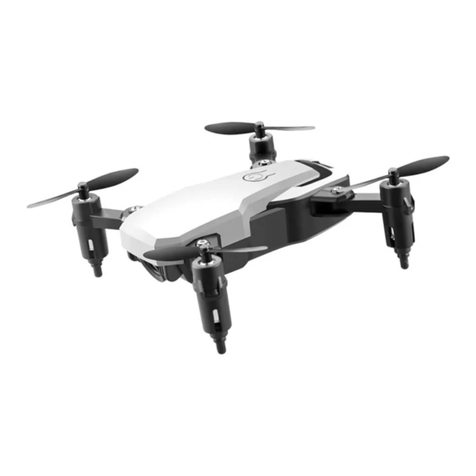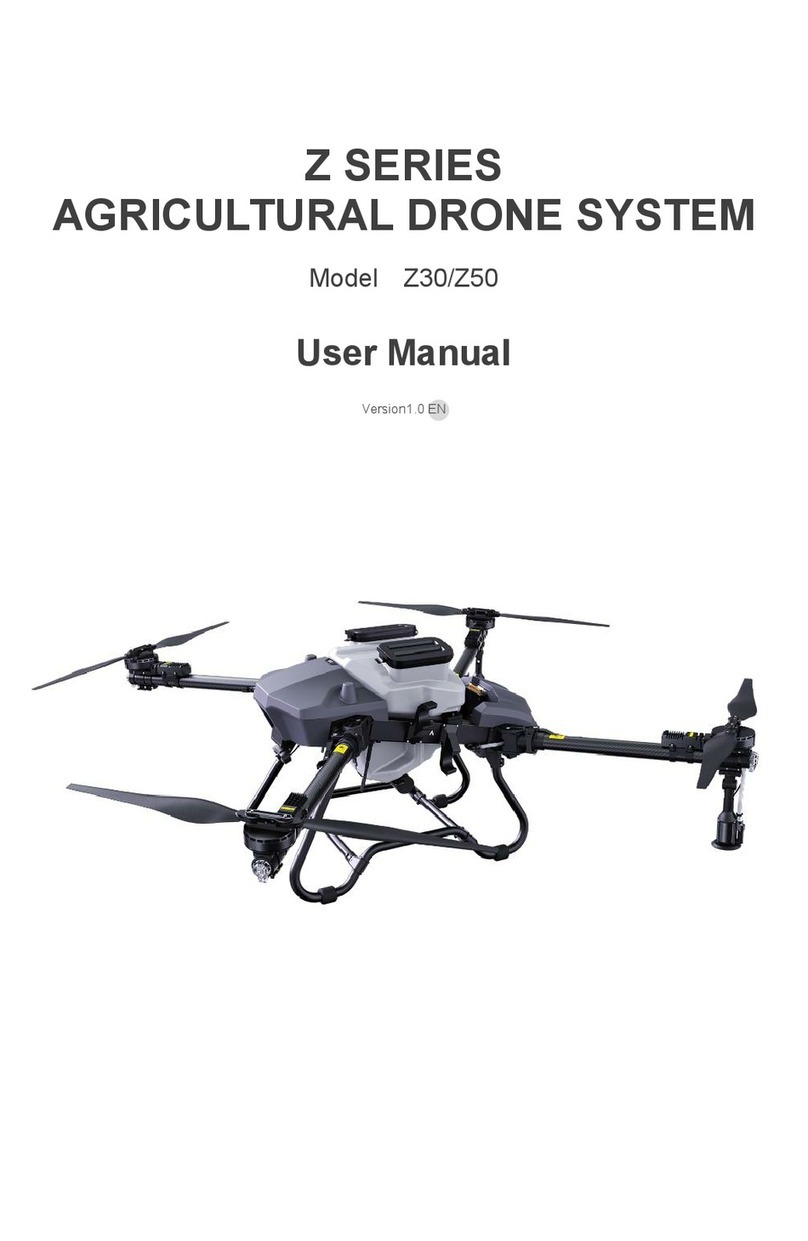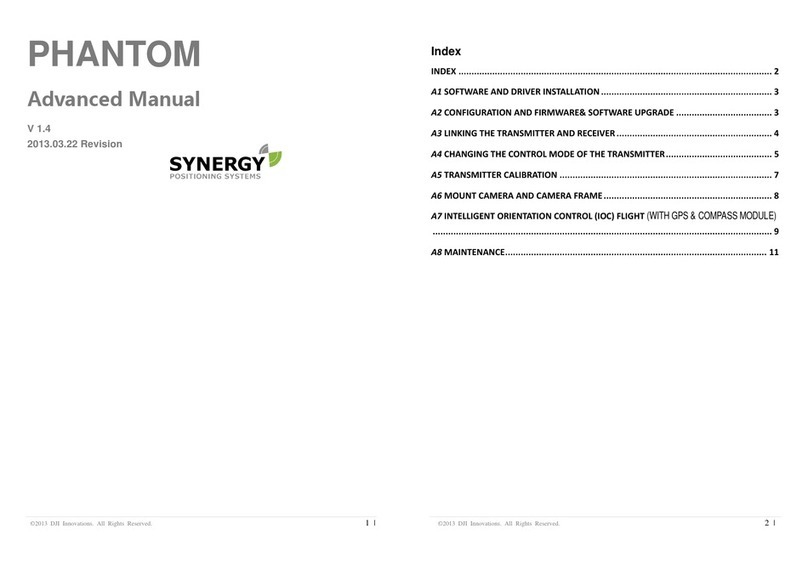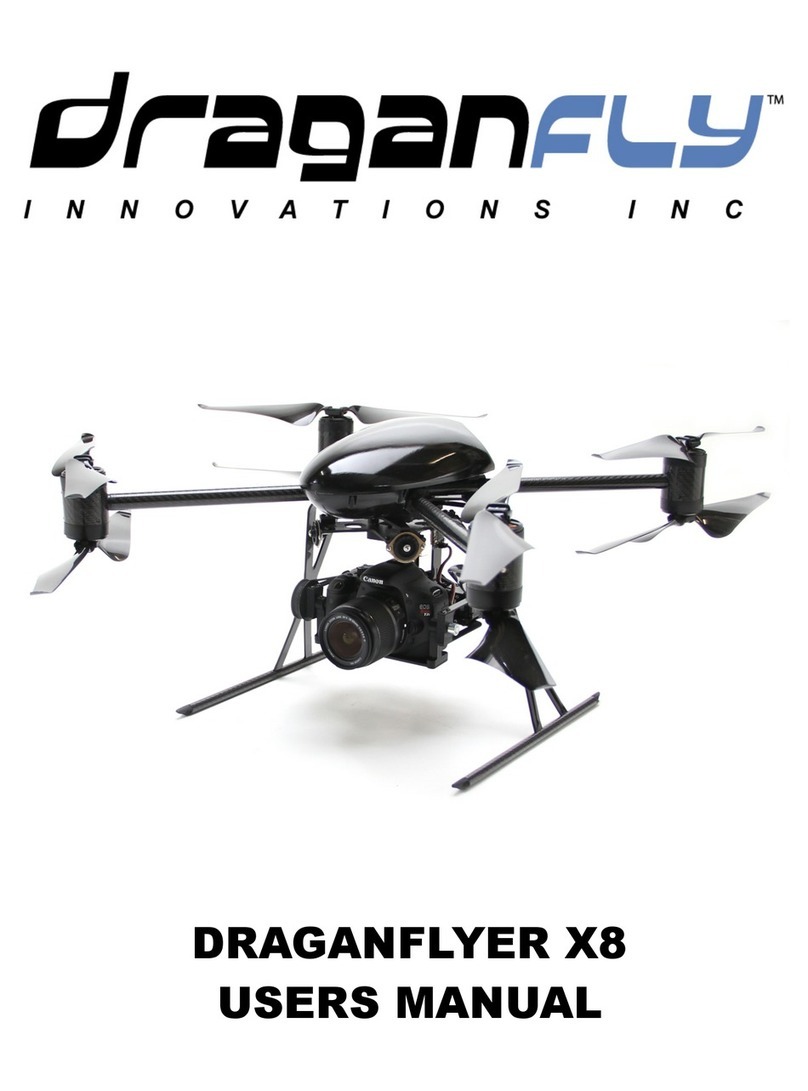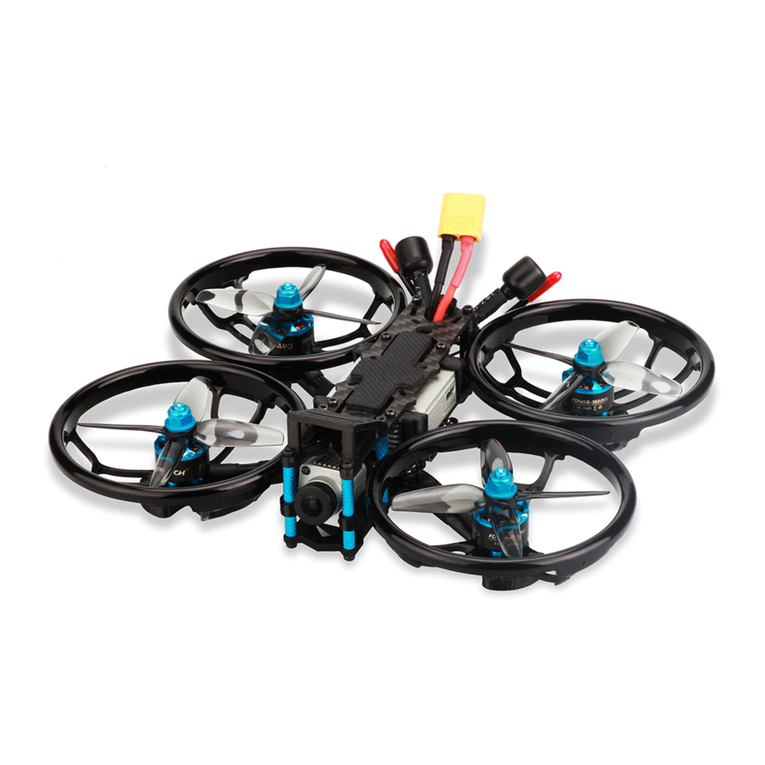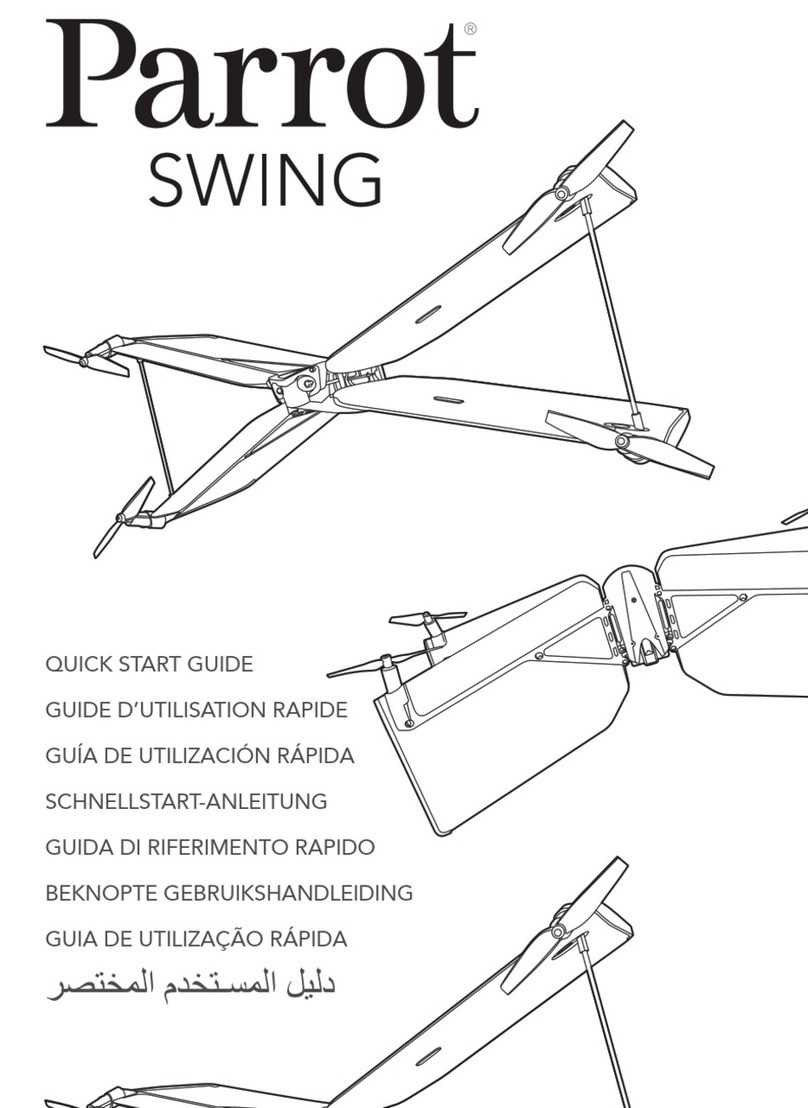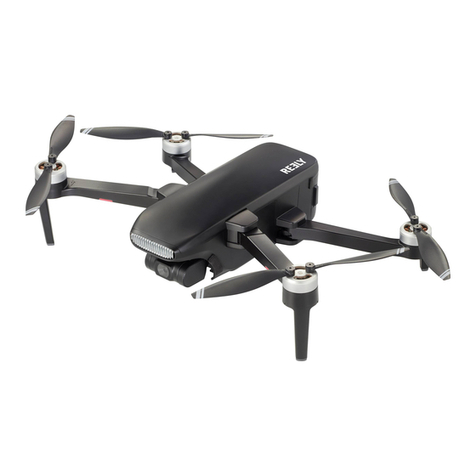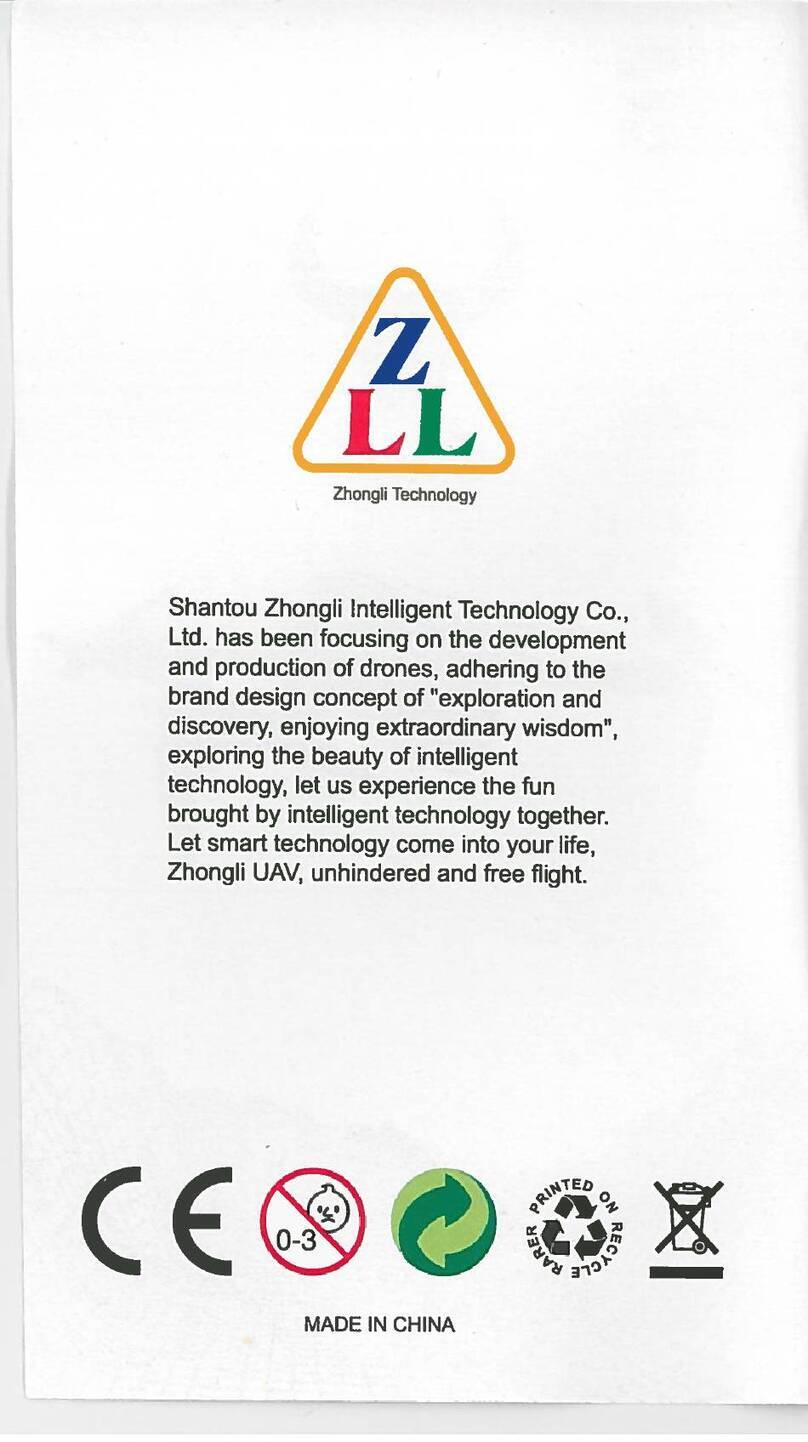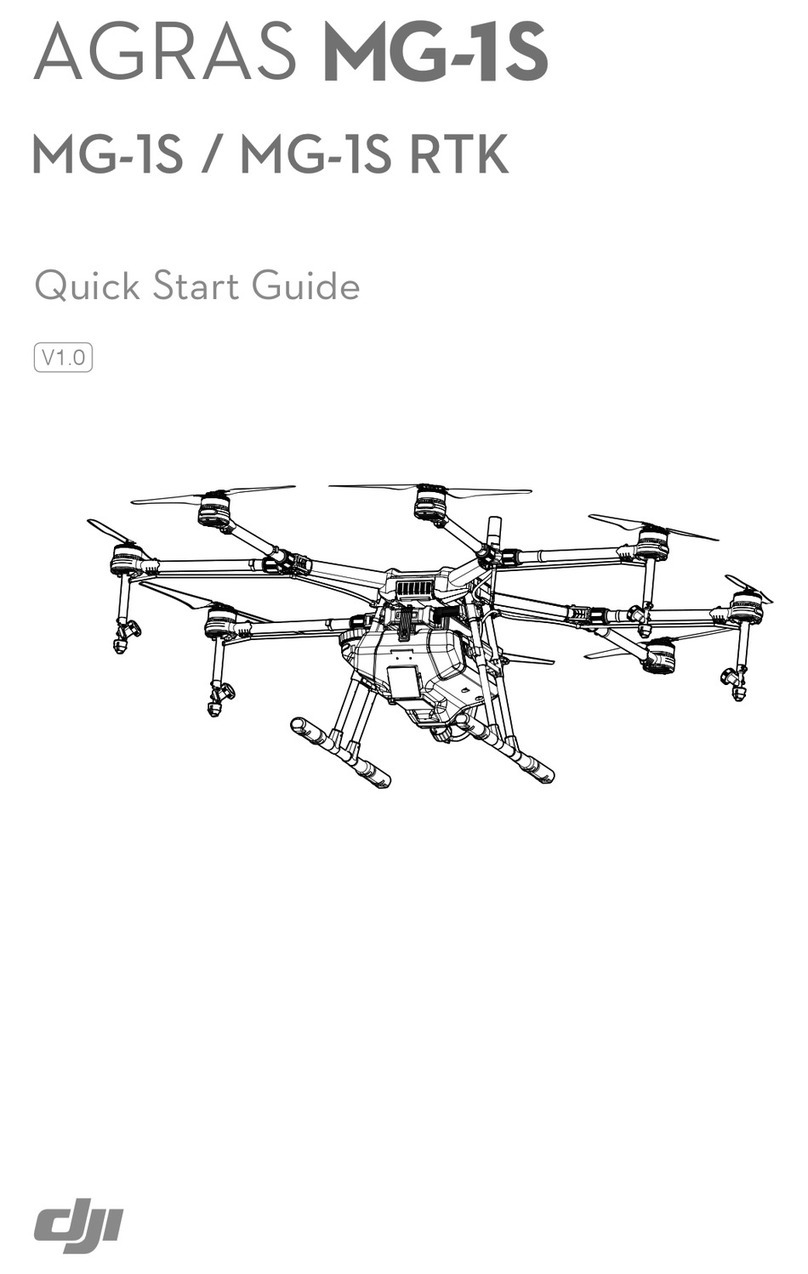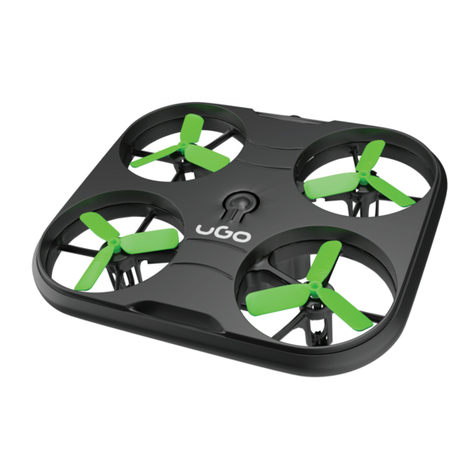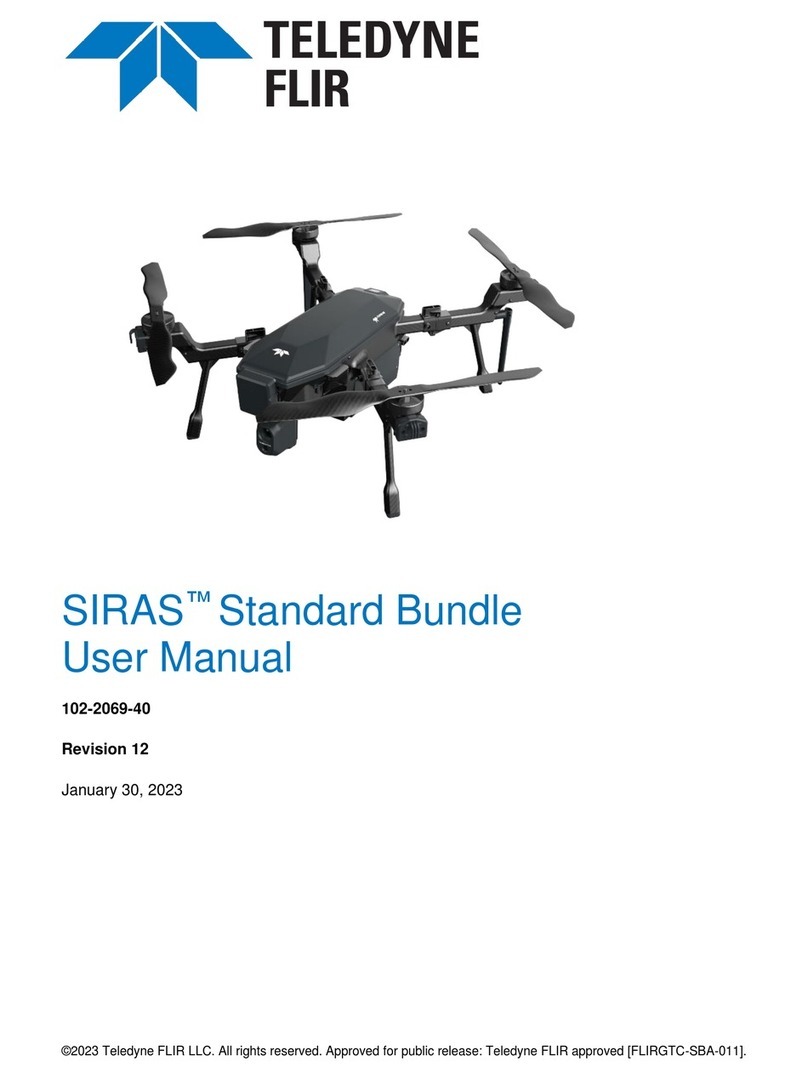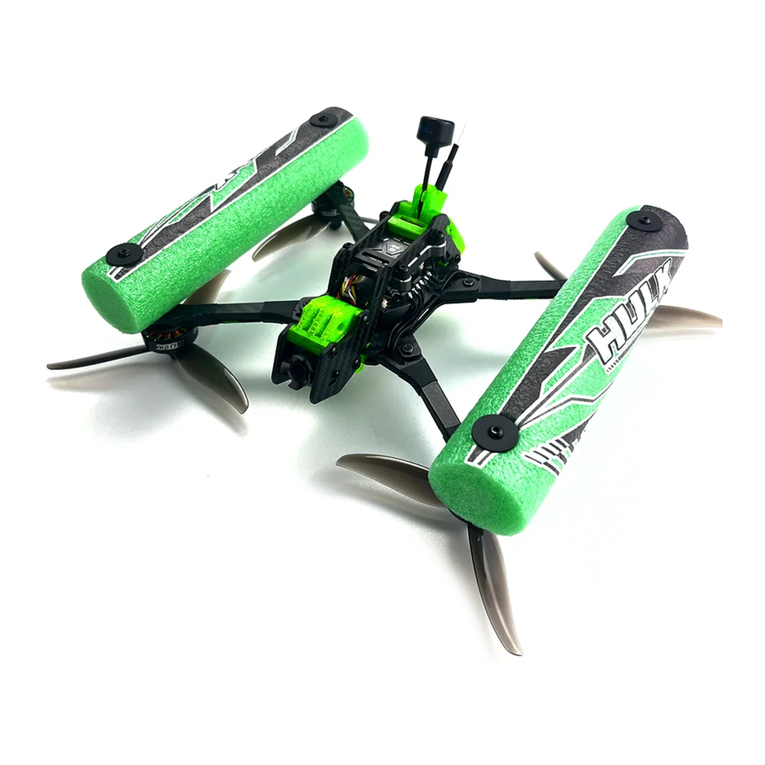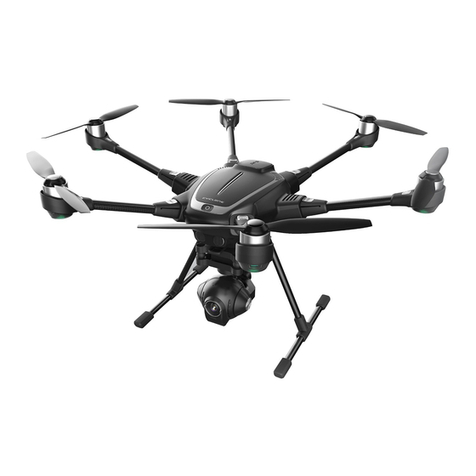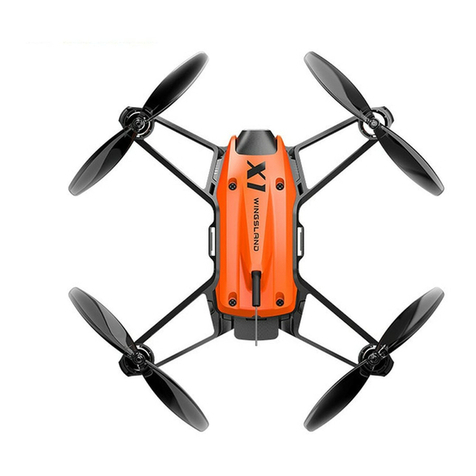Geoscan 401 User manual


CONTENT:
1 General information 1
1.1 Kit ................................................. 1
1.2 Technical parameters ...................................... 2
1.3 Maintenance ........................................... 2
1.4 Storage .............................................. 3
2 Safety rules 4
2.1 Operational restrictions ..................................... 4
3 UAV 5
3.1 Parts ............................................... 5
3.2 Assembly ............................................. 5
4 Ground Control System 11
4.1 Kit ................................................. 11
4.2 Assembly and set up ...................................... 11
5 Set up the camera 12
5.1 Set up the Sony DSC-RX1 camera .............................. 12
5.2 Set up the Sony A6000 camera ................................ 14
5.3 Offsets coordinates ....................................... 17
6 Charger and battery 18
6.1 Safety requirements ....................................... 18
6.2 Preset of the battery charger .................................. 19
6.3 How to connect the battery to the charger ........................... 20
6.4 Battery indication ........................................ 20
6.5 Lithium polymer (LiPo) battery recommendations on the use ................ 21
6.6 Storage and discharge ..................................... 21
6.7 Battery recycling ......................................... 21
7 Geoscan Planner 22
7.1 Preset ............................................... 22
7.2 Creating a flight task ....................................... 24
7.3 Areal surveying ......................................... 26
7.4 Linear surveying ......................................... 31
7.5 Flight by points .......................................... 32
7.6 Waiting point ........................................... 32
7.7 Panoramic survey ........................................ 33
7.8 Landing point ........................................... 34
7.9 Pre-launch preparation ..................................... 34
7.10 Flight ............................................... 35
7.11 Cancel .............................................. 35
7.12 Land ............................................... 36
7.13 Guided flight ........................................... 36
i

CHAPTER
ONE
GENERAL INFORMATION
Geoscan 401 – multifunctional complex, that included multirotor unmanned aerial vehicle (UAV) and
ground control system (GCS).
1.1 Kit
• Geoscan 401 unmanned aerial vehicle (UAV)
• UAV’s transport container
• Payload: *
–customized Sony А6000 camera;
–customized Sony DSC-RX1 camera;
–gyro-stabilized optical-electronic system with FullHD videocamera;
–gyro-stabilized optical-electronic system with thermal imager 640x480;
–digital broadband video receiver;
–onboard geodetic GNSS receiver Topcon with antenna (L1-L2, GPS/GLONASS/BeiDou);
–quantum magnitometer Geoscan QM-Rb-1.
• 37 V LiPo battery
• Left rotation propeller - 2 PCs
• Right rotation propeller - 2 PCs
1

• Charge station in transport container
• Ground Control Station (GCS) based on laptop with software *
• GCS’s Table *
• Mouse
• CRL modem
• CRL modem’s antenna
• Pole for CRL modem
• SDHC card 64 Gb - 2 PCs *
• SD card 4 Gb - 2 PCs *
• USB cable
• GCS “Video” *
• Spare parts and accessories:
–Left rotation propeller;
–Right rotation propeller;
–CRL modem’s antenna.
*-Depends on equpment
1.2 Technical parameters
Type of UAV quadcopter
Engine electric, brushless - 4 PCs
Battery 37 V LiPo
Launch/Landing verticaly, in automatic mode, from/to 5 m area
Flight duration up to 1 h
Max wind speed 12 m/s
Speed of flight 0-50 km/h
Min safe flight altitude 25 m
Max flight altitude over start point 500 m
Max takeoff weight 9,3 kg
Max payload mass 2,5 kg
Preparation time before takeoff 5 min
UAV’s overall dimensions folded 70х25х20 cm
unfloded 150х150х43 cm
Photo shooting area in one flight 2 cm/pix quality 0,95 km2
3 cm/pix quality 1,4 km2
5 cm/pix quality | 2,1 km2
Operating temperature range: -20 to +40 °C
-40 to +20 °C (“Arctic” battery)
1.3 Maintenance
Visually inspect UAV for a damage after each flight.
If a propellers are damaged, you can replace it yourself using spare parts and tools from the kit.
If structural damage to the airframe or systems is detected, contact Geoscan support.
2 Chapter 1. General information

After 80 flights it is recommended to send your UAV to the manufacturer for inspection and maintenance.
1.4 Storage
Geoscan 401 complex (without battery) are recommended to be stored in a transport containers in dry
rooms at a temperature of 5 to 25 °C and relative humidity not more than 80% without condensation.
Shelf life - 2 years.
Batteries should be stored in a cool and dry place, without direct sunlight, at a temperature of 5 to 25
°C and a relative humidity of 80% without condensation. The optimum voltage level when placing the
battery to storage: 38,5 V. Shelf Life - 1 year.
1.4. Storage 3

CHAPTER
TWO
SAFETY RULES
For safe use of UAV, follow these operating instructions:
• UAV launch and maintainence can be held only by persons trained according to the “Plan of the-
oretical and practical training of the operator to control the unmanned complex GEOSCAN 401”;
• before the flight it is necessary to inspect the flight area and make sure that the planned flight path
passes not less than 100 m above the terrain and high-rise objects (mountains, towers, pipes,
transmission towers, etc.);
• don’t launch the UAV if any malfunction is detected;
• after connecting the battery to the UAV it is prohibited to be in the propeller blades rotation plane;
• don’t launch or fly UAV near high power radio transmitters;
• avoid flying above crowded places;
• turn on UAV power only to send flight task or directly before prefight check;
• don’t assemble or disassemble the UAV when the power is on;
• don’t circuit battery pins;
• transportate the UAV only in transport container;
• Don’t hold UAV’s when you move it;
• remove the camera lens cap only before flight mission start;
• don’t modify or change constructive elements of the UAV.
2.1 Operational restrictions
• Operating temperature range: -20 to +40 °С, -40 to +20 °С with “Arctic” battery
• Max wind speed: 12 m/s
The aerial photography complex is not intended for flights during rain, snow and other precipitation.
It is necessary to leave the complex at room temperature for 24 hours after transportation at low tem-
peratures.
4

CHAPTER
THREE
UAV
3.1 Parts
3.2 Assembly
1) Take the landing gears base part and landing gears from the UAV’s transport container.
2) Put landing gears in the landing gears base part tubes.
3) Tighten connecting nuts on landing gears by hands.
4) Fix nuts position by elastic fixators.
5

Fig. 1: Installation and fixation of the landing gears
5) Take the quadcopter from the UAV’s transport container.
6) Remove a protective transport elements.
7) Take the quadcopter’s frame arms out to the sides.
Fig. 2: Quadcopter assembly
8) Move frame arms nuts to the quadcopter’s frame central part and tighten it.
6 Chapter 3. UAV

Fig. 3: Quardcopter’s nuts moving
Attention: Make sure that the nuts are covered frame pins.
9) Put the quadcopter on landing gears base part.
• Frame loops must be connected with landing gear’s loops.
• Take the servo cradle and position it under the quadcopter’s frame. The frame loops must be
connected with servo cradle’s loops. (see the picture). The camera lens should be directed in the
direction of the slope of the quadcopter fairing.
Fig. 4: Connection of the parts
• Put a mounting rods in loops on the side of the red seals.
3.2. Assembly 7

Fig. 5: Connection of the parts
Attention: Make sure that, the rods are fully puted (Rod’s rings must be puted into red seals).
10) Install propellers on the motors. The color markings on the motors and propellers must be the
same. Arrow icon in center of propeller is shows rotate direction to install. Screw each propeller
onto the threads. Rotate a propeller in the opposite direction to unscrew.
Fig. 6: Fixation of the propellers
8 Chapter 3. UAV

Attention: Before each start make sure that all propellers are not damaged. Do not use worn,
cracked or damaged propellers.
11) Put payload’s connection cable (if payload connects with UAV) in quardcopter’s slot.
Fig. 7: Connection of the payload cable
12) Screw CRL antenna in quadcopter’s arm pin.
Attention: Make sure that the pin is clear. Clear pin by using alcohol-soaked lint-free cloth.
Attention: Do not turn on UAV power without CRL antenna. This may damage the receiver.
Fig. 8: Connection of the CRL antenna
3.2. Assembly 9

13) Eject payload’s memory cards, format and insert them back. *
*-Depends on equpment
Fig. 9: Instaling memory card in UAV’s slot (kit with GNSS receiver).
14) Install the battery in battery slot until it stops (Battery pins must be on the left side looking forward).
Fig. 10: Installing of the battery
15) Fix the battery by textile clasp.
10 Chapter 3. UAV

CHAPTER
FOUR
GROUND CONTROL SYSTEM
4.1 Kit
4.2 Assembly and set up
1) Eject the GCS table from the UAV’s transport container.
2) Place the table on a flat work surface.
3) Undo textile clasp and eject a laptop.
4) Assemble parts of the CRL pole together.
5) Eject the GCS modem and CRL antenna from UAV’s transport container.
6) Connect antenna with modem.
7) Place the CRL pole and use mounting screws to fix CRL modem on top of the pole.
You can place CRL pole inserting into hole in UAV’s transport container or bury it in a ground.
8) Connect CRL modem with laptop.
Important: The CRL modem must be installed at the highest possible height. The antenna must be
positioned vertically.
Attention: Don’t connect CRL modem with GCS without antenna. This could lead to damage of the
CRL modem.
Don’t install CRL modem in car or building.
11

CHAPTER
FIVE
SET UP THE CAMERA
5.1 Set up the Sony DSC-RX1 camera
Read the camera’s full operating instructions to know about main control elements before make settings.
• Set mode dial in S(Shutter Priority) position.
• Use control dial to set exposition 1/800.
• Set exposure compensation dial in 0(zero) position.
• Set macro switching ring in 0,3m-∞position.
• Set focus mode dial in MF position.
Press MENU button to see settings menu and set this parameters:
• In still shooting menu (tab 1) set Image Size -L24M,Aspect Ratio -3:2,Quality –Fine.
Fig. 1: Still shooting parameters
• In custom menu (tab 1) set Auto Review -Off.
Fig. 2: Auto Review off
• In tab 2 set MF Assist -Off and Focus Magnif. Time -No limit.
12

Fig. 3: MF Assist is off and Focus Magnif. Time
• In tab 3 set MOVIE Button -Movie Mode Only.
Fig. 4: Set mode movie mode only for MOVIE button
• In setup menu set Power Saving Start Time -30 min (tab 2).
Fig. 5: Power Saving Start Time
• In memory card tool menu set File number -Reset.
5.1. Set up the Sony DSC-RX1 camera 13

Fig. 6: File number reset
• Press Fn (Function) button to set these settings:
Drive Mode Single Shooting
White Balance Auto AWB
Select ISO -Auto and set:
ISO Minimum 100
ISO Maximum 1600
Keep default parameters for other camera settings.
Format SD card
1) Select MENU →[SD Card] →Format
Attention: All data will be deleted!
Reset
To reset all settings set:
1) Select MENU →[Settings] →Initialize →Reset Default
Attention: Do not remove the battery while resetting the settings!
2) Set date and time after reset. Camera settings will not be saved, if you skiped that action.
3) Use ON/OFF switcher to turn off the camera.
4) Do not disconnect the camera from AC or battery for 3 minutes to save the settings in the internal
memory.
Important: The camera can display the message E: 61: 00. It means that the camera is focused on
maximum range. The camera still works correctly.
5.2 Set up the Sony A6000 camera
Read the camera’s full operating instructions to know about main control elements before make settings.
14 Chapter 5. Set up the camera

• Set the mode dial to S(Shutter Priority).
Use the control wheel to set the following parameters:
Exposition 1/800
ISO Auto
• In still shooting menu (tab 2) set Focus Mode -Manual focus.
Fig. 7: Focus Mode
• In custom settings menu (tab 1) disable Automatic preview.
Fig. 8: Automatic preview off
• In custom settings menu (tab 3) turn on Lens-less Shutter.
Fig. 9: Turn on the shutter without a lens
5.2. Set up the Sony A6000 camera 15

• In custom settings menu (tab 6) set the MOVIE button - Video mode only.
Fig. 10: Set “Video Mode Only”
• In setup menu (tab 2) set Start time energy saving -30 min.
Fig. 11: Set the time to start energy saving
• In setup menu (tab 5) set File Number -Reset.
Fig. 12: Reset file number
Format SD card
1) Select MENU →[Setup] →Format
Attention: All data will be deleted!
16 Chapter 5. Set up the camera

5.3 Offsets coordinates
The antenna of the geodetic receiver is located inside the UAV. The phase center is offset from the center
point of the camera lens. The amount of offset should be taken, when you generate ortophotomaps and
3D models.
Fig. 13: Offsets coordinates for Sony DSC-RX1 camera
5.3. Offsets coordinates 17
Other manuals for 401
2
Table of contents
Other Geoscan Drone manuals

